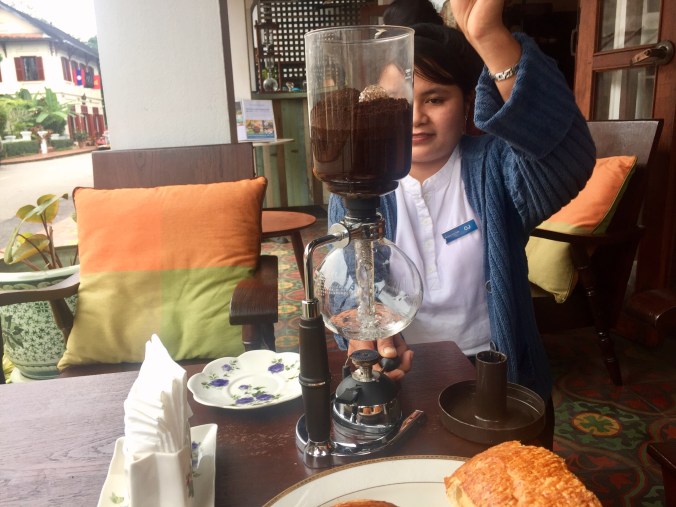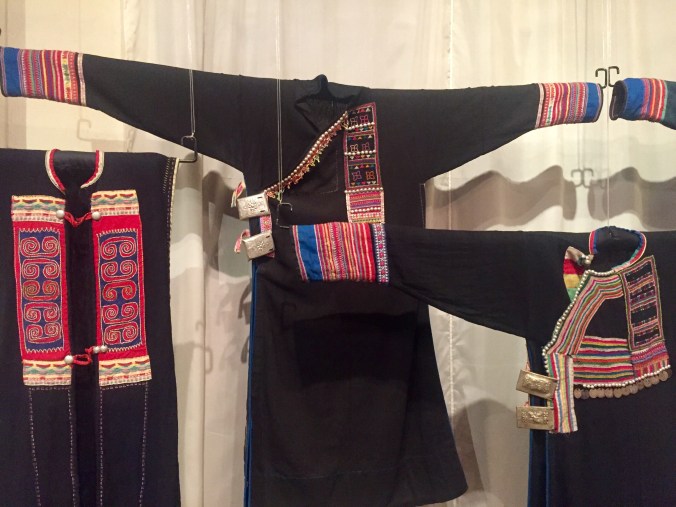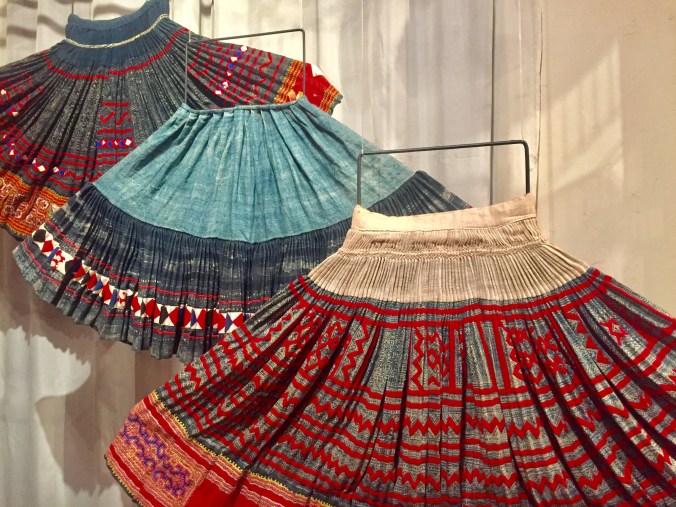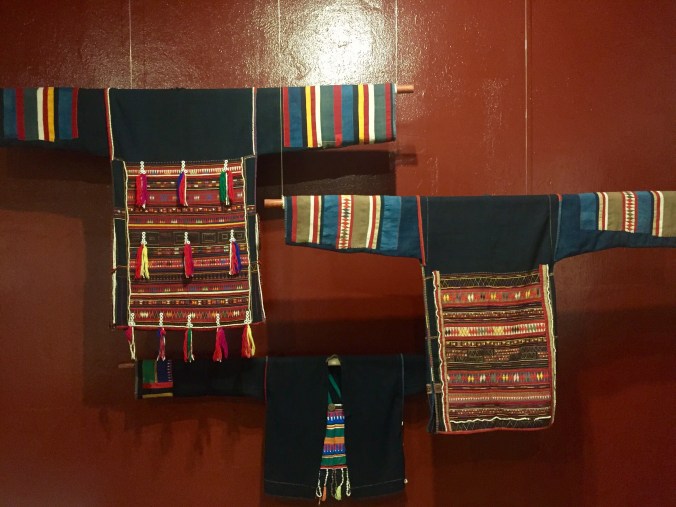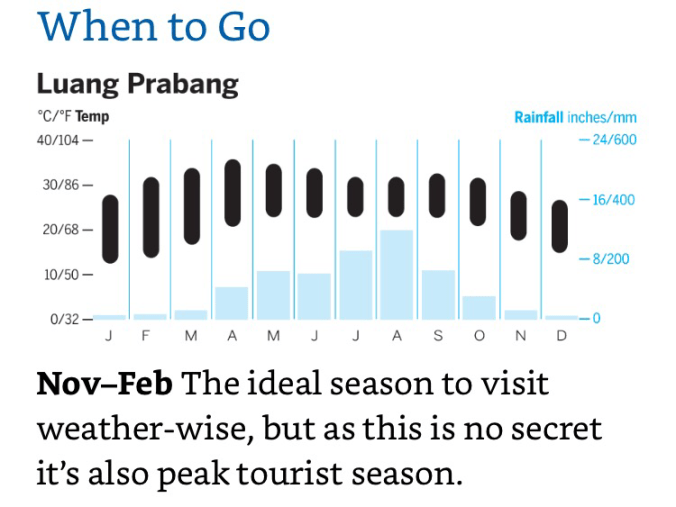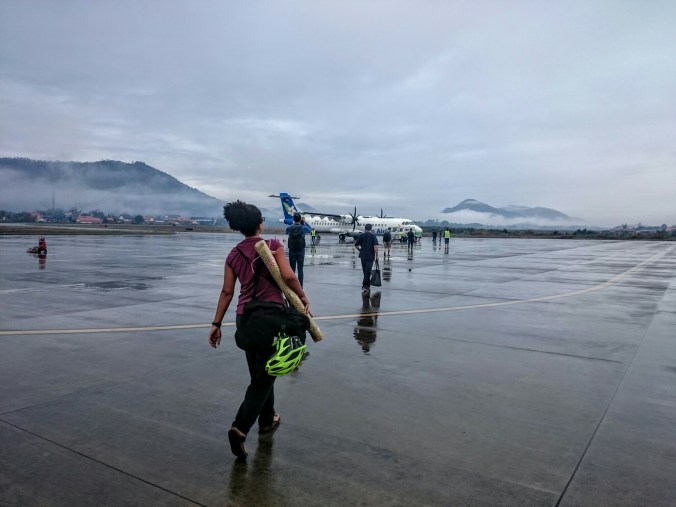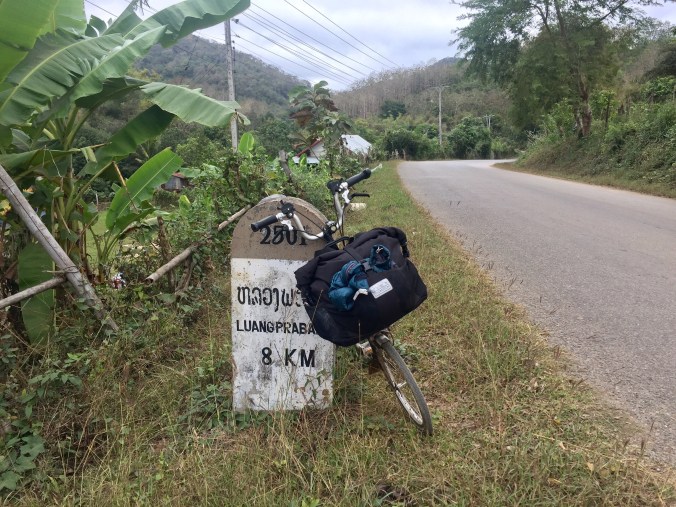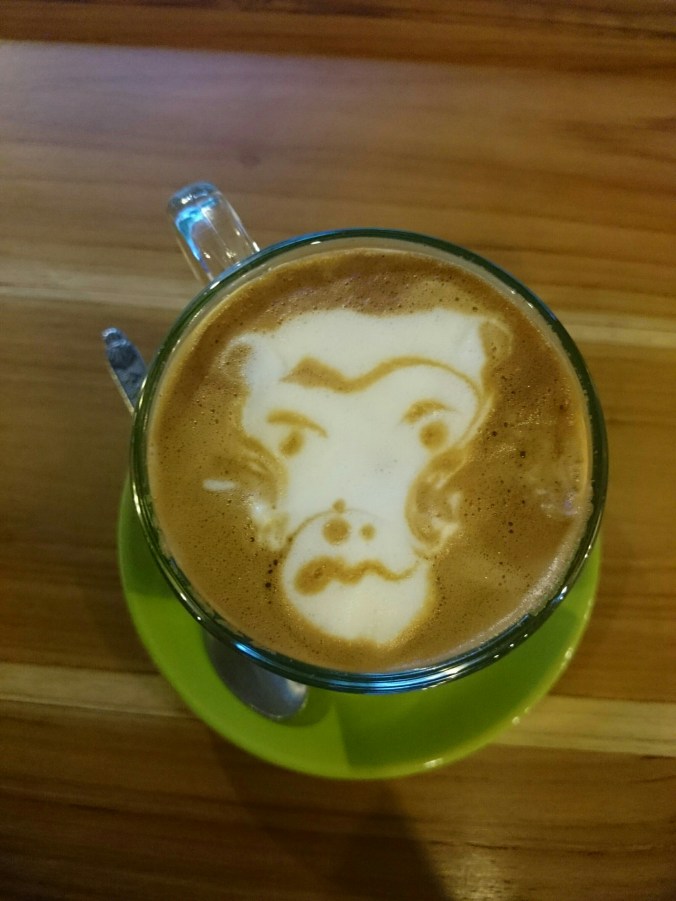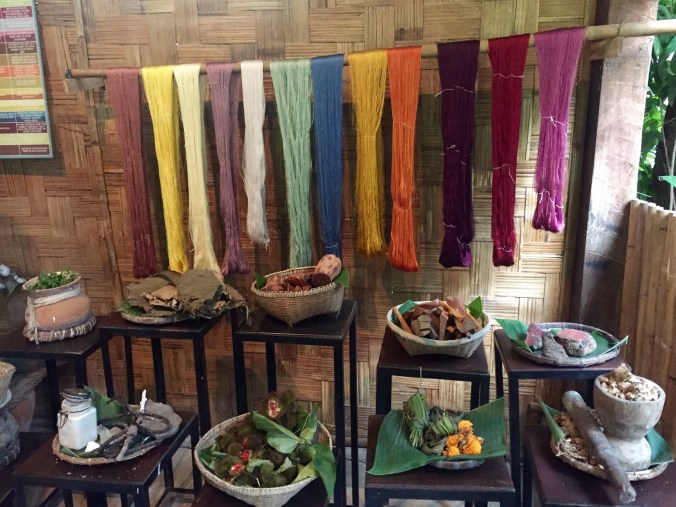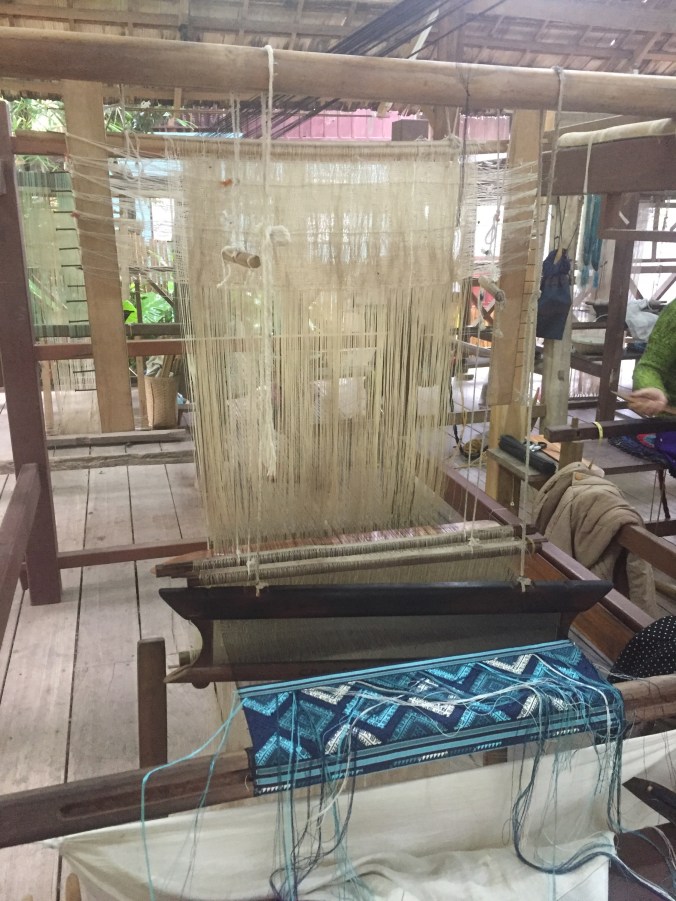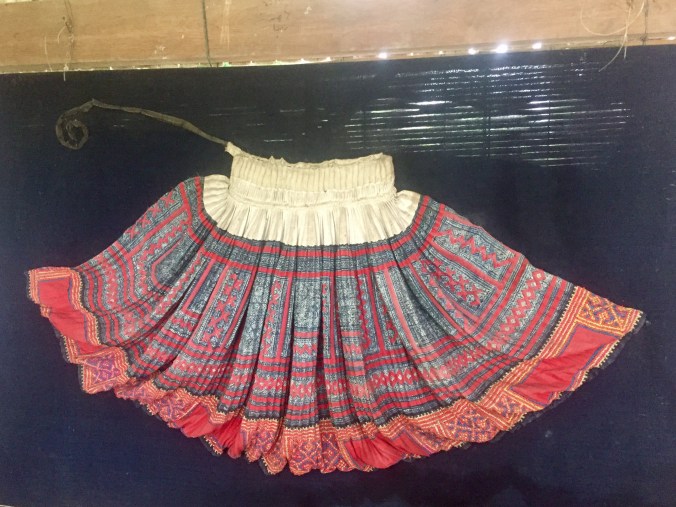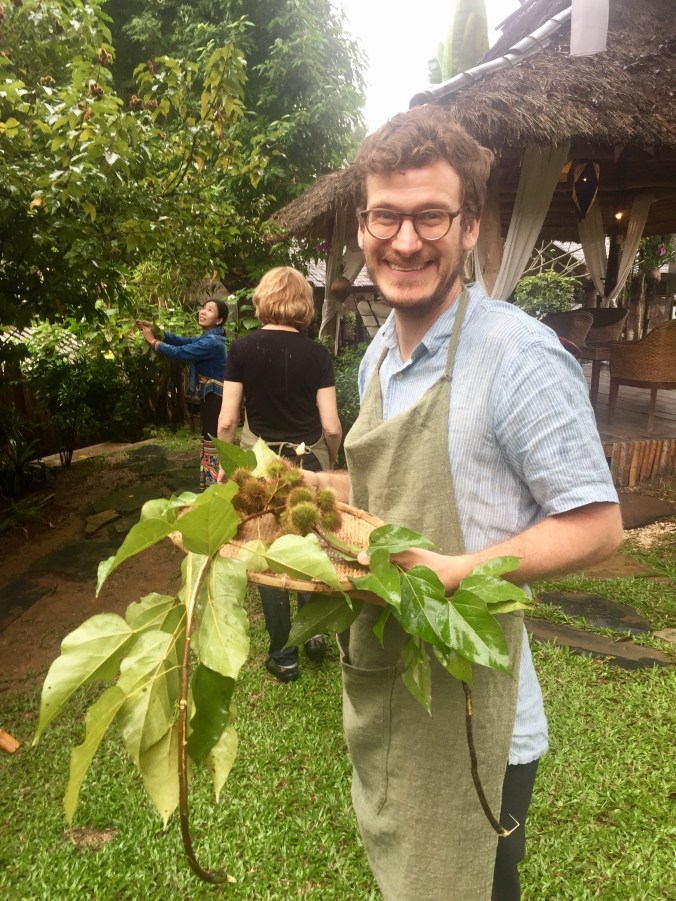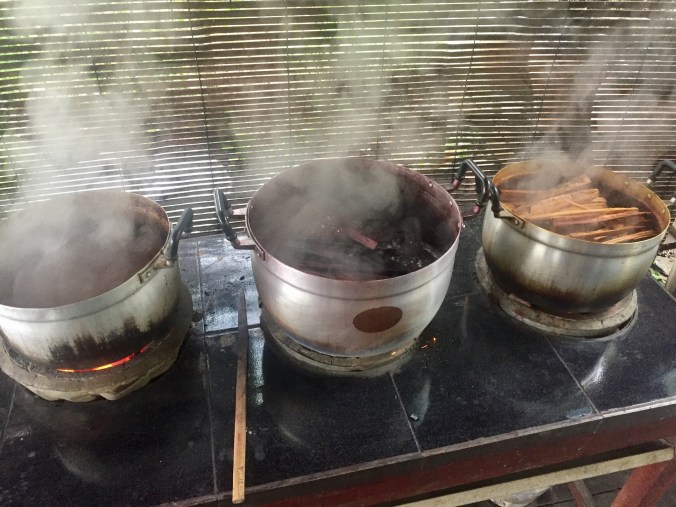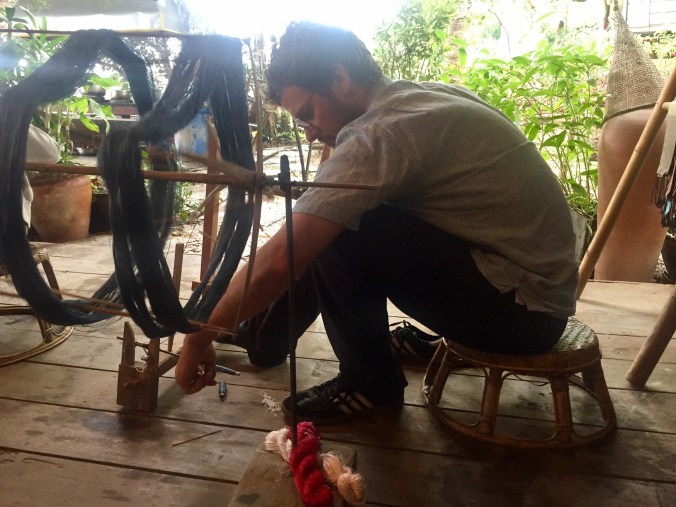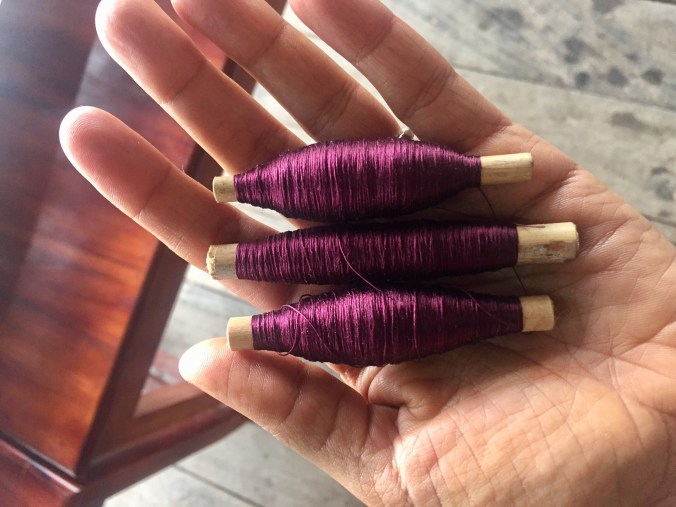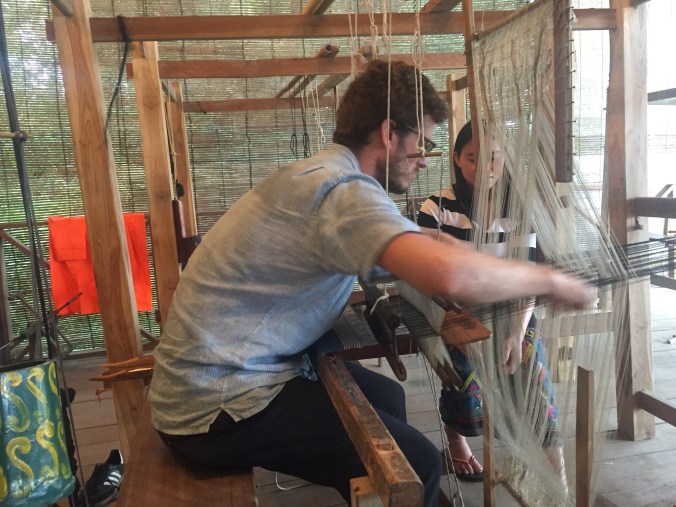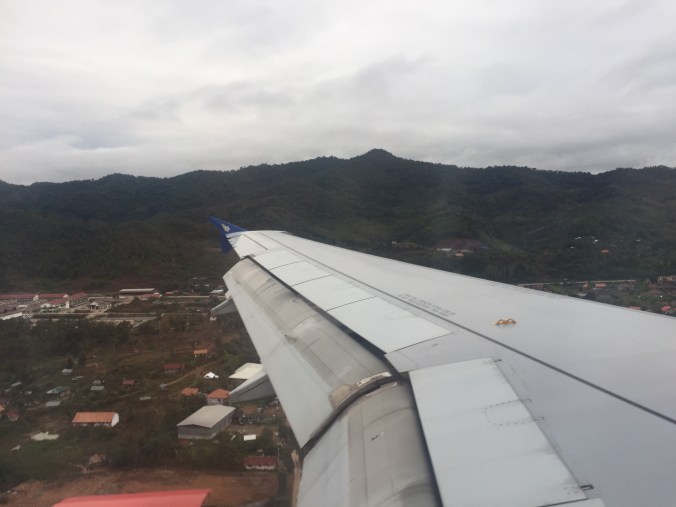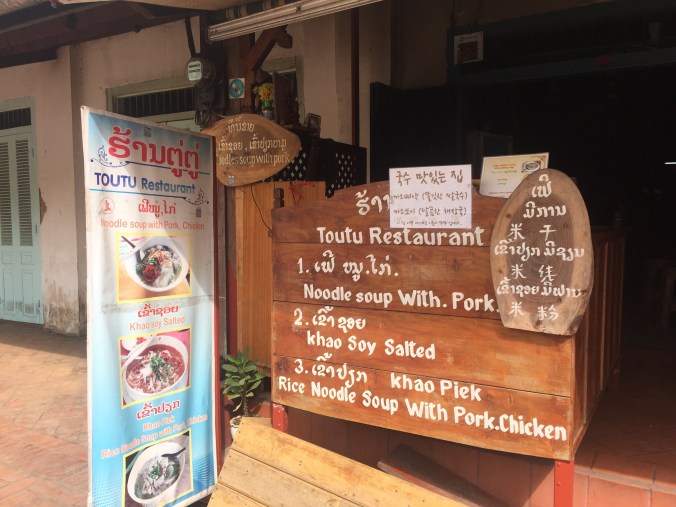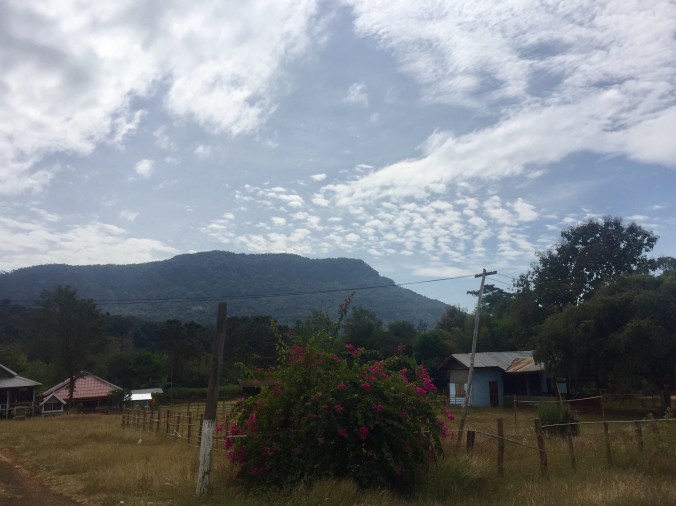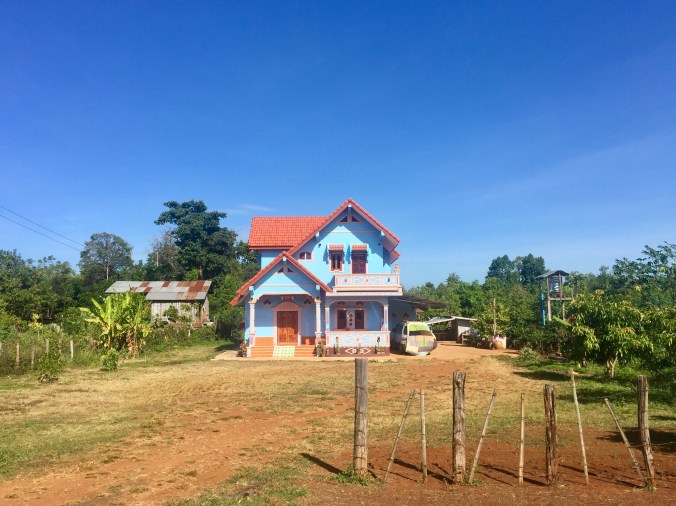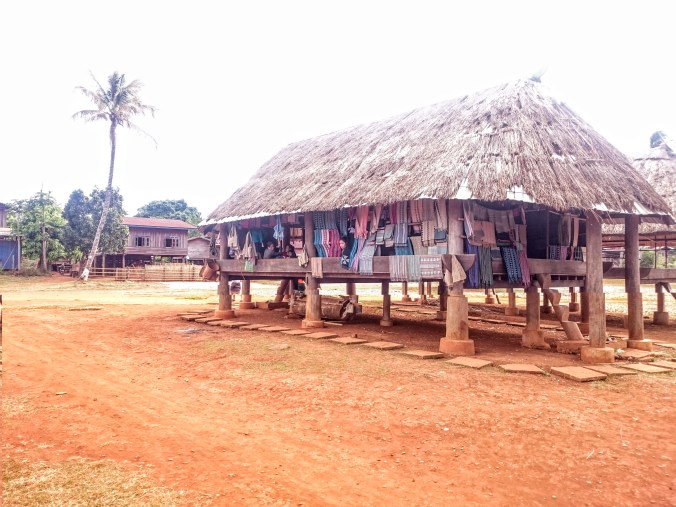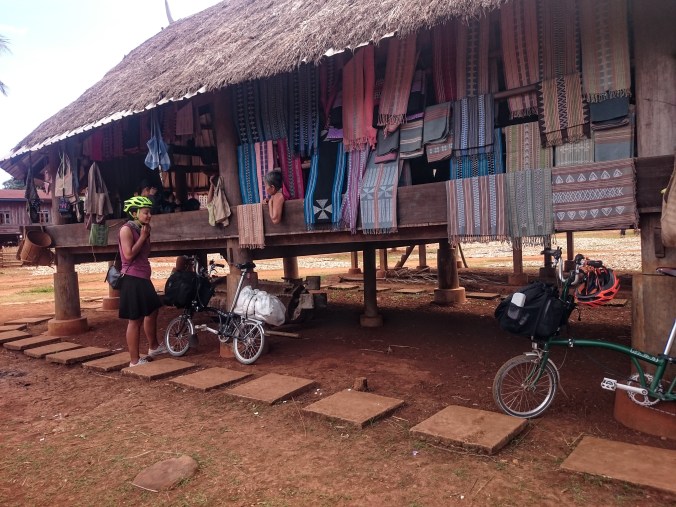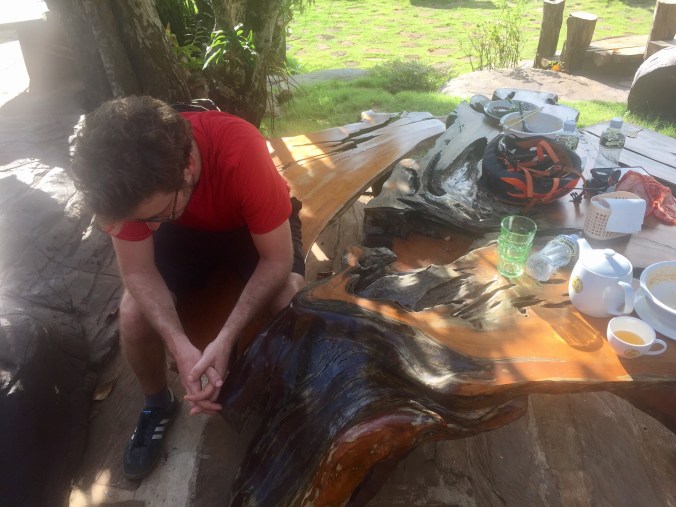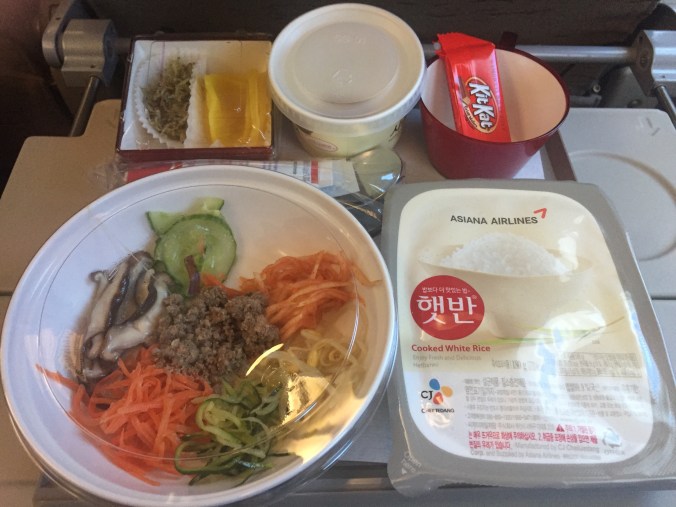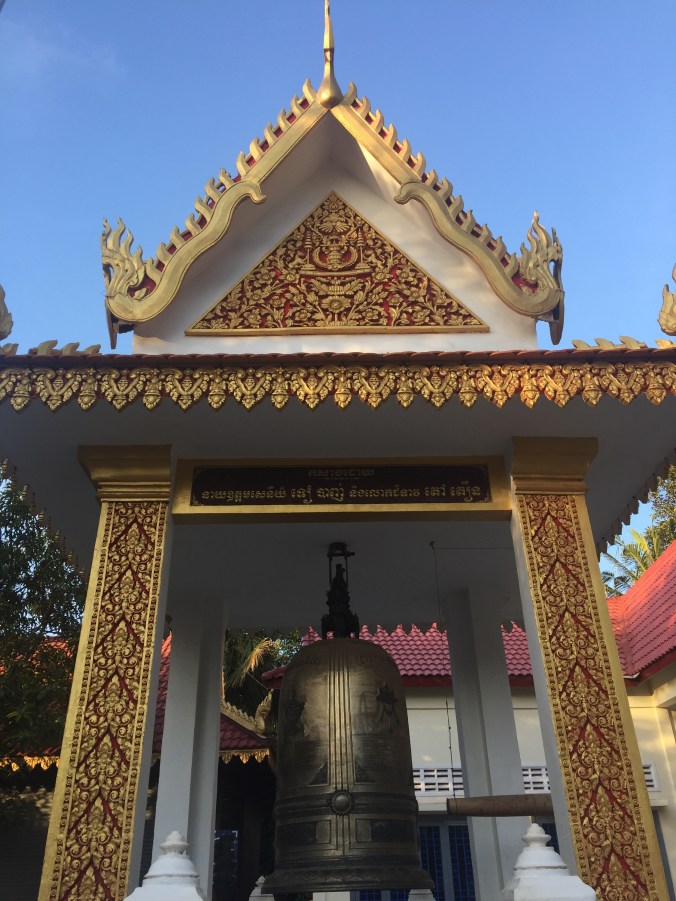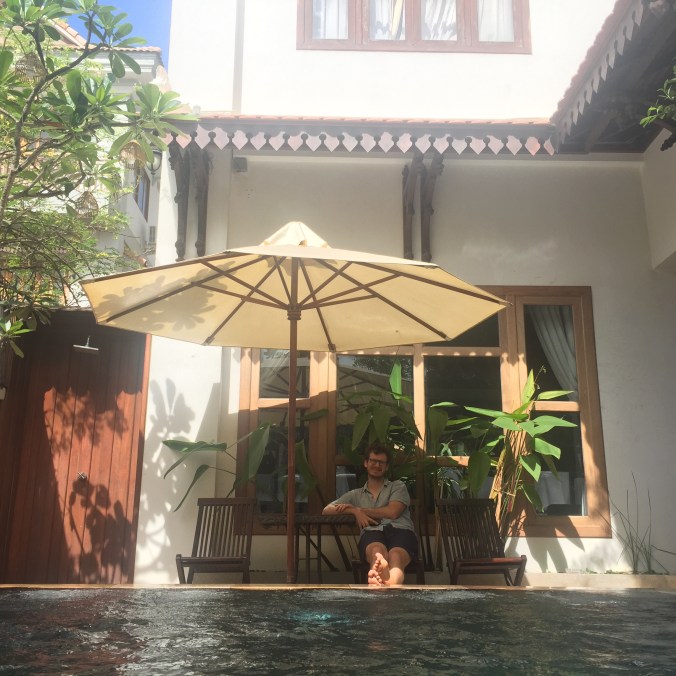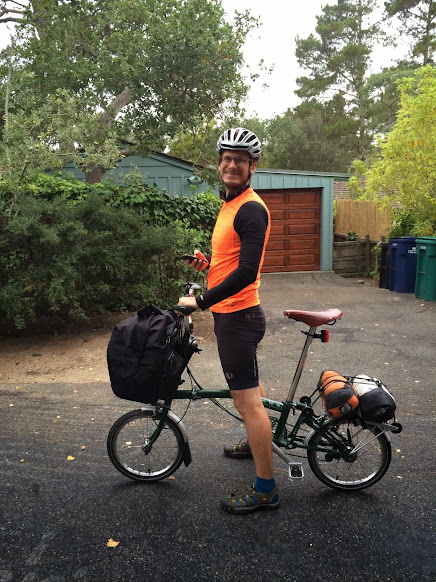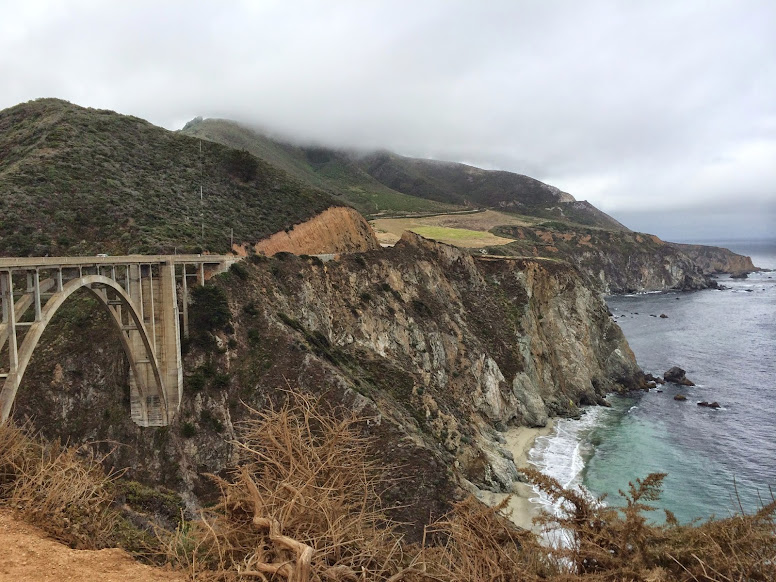Jan 11, 2017
Bonus day in Luang Prabang! We didn’t want to pack too much into the day; we wanted to relax and wander and simply enjoy one last day in this city we’ve come to love. We slept in until 9 or so, showered, and headed up to the Chang Inn, where we sat on the porch swing, ate chocolate croissants, drank siphon coffee (so cool – see below), and people watched.
After an hour or so, we set off. We tried to sign up for a Lao cooking class (since we enjoyed the weaving class so much), but the one we wanted to do was full. Then we had to go back to the hotel because we were changing rooms (back to our original guesthouse, which also had lovely rooms, just smaller).
Then we headed to get more noodles (fifth-and last-time customers :'(). After lunch we visited the Royal Palace Museum, which was super cool.
It’s a palace built in 1904 where a couple Lao kings lived before the communists took over in 1975. The Lao government restored the palace and opened it to the public in 1995. Every wall in the throne room is filled with the beautiful glass mosaics depicting everyday Lao life like those seen at Wat Xieng Thong.
The throne itself was beautiful, but it was never actually used. Sisavang Vatthana, the last King of Laos, took over in 1959 and commissioned a new throne for his coronation. However, the astronomers (we think?) could not determine an auspicious date for the coronation, and were still trying to decide when he (the king) was forced to abdicate in 1975.
There were two reception rooms, a dining room, and three bedrooms visible to the public filled with original furniture as well as some other royal objects. The bedrooms were surprisingly simple with white walls and sheets, minimal and sleek mid-century furniture, and dark wood mouldings. It was refreshing to see such simplicity where one might expect to see ugly ornate design. No photos were allowed, so the palace’s looks will remain a mystery to you until you visit Luang Prabang! But here are more pictures from our street wandering.
Then we got more coffee from Chang Inn (this time we got a percolator — they had all the different ways to make coffee!) and played the game Set, which has been a consistently entertaining travel game.
Next we headed to the Traditional Arts and Ethnology Center to learn more about some of the ethnic groups within Laos (there are 49 main ethnicities consisting of over 160 ethnic groups!) and their traditional crafts. Yet another heavenly place for me — it seems that each of the major people groups in Laos takes textile design very seriously and it was such a lovely experience to learn more about the history behind their craft, as well as to gain more appreciation for the incredible amount of time and creativity that go into making each piece. For example, the H’mong new year celebration is a huge event involving many festivities, including courtship (because the H’mong have a strict prohibition against marrying within one’s own clan and this festival is prime inter-clan mingling time), and mothers will take months to prepare costumes for their sons and daughters. As a perpetual craft-project-quitter, I am so impressed by the patience, diligence, and creativity that are so valued and abundant in this country. Another must-see if you come to Luang Prabang!
After this, we walked through steadily increasing rain back toward town and got drenched. We found respite from the rain at the Ock Pop Tok store, where we agonized for probably an hour over whether we should buy one last hand-woven Lao textile.
We did.
Then we got our final Lao meal at the Bamboo Tree. I think we’ll be making a lot of Lao Laap at home. It’s absolutely delicious and fairly simple. I don’t know why it isn’t more popular in the States. Sticky rice, now, that’s more complicated.
Finally, we headed home to pack up for an early start tomorrow.
Jan. 12, 2017
Oof, it has been rainy here the past couple days despite a weather guide that looks like this:
Pretty much no rain in January. Because of that weather guide, we decided not to waste space on rain gear for this trip. People who know us well know that we can be stubbornly, unreasonably frugal about weird things, so we’ve been traipsing around getting genuinely drenched for a couple days rather than spending a dollar each on a cheap poncho.
Anyway, this morning was particularly rainy, and in another fit of stubborn unreasonableness, we decided to bike the 6k to the airport at 5:45a in the pitch dark, pouring rain. This was not a great idea. Though the town is well-lit, the outskirts are not, so mix that with soaked and foggy glasses and we were basically riding blind. Traffic was light, though, and somehow we made it, but we got a lot of laughs from the check-in agent and others at the airport. Oh well, we were determined to bike!
We flew to Bangkok and got through immigration in time for the 11a minibus that was scheduled to depart for Koh Chang, just as we’d hoped to do! Ted got money from the ATM while I got our bikes, then we went to buy bus tickets, but they were sold out for 11a, so we’d have to wait until 2p.
However, this turned out to be a very good thing because guess who lost their passport in the middle of one of the world’s busiest airports? After a quick panic attack, Ted ran off in search of his passport. He first went to a “Tourist Police” desk near the cafeteria where the discovery was made, and was told to go to the “Tourist Police” desk.
This was confusing, and he thought he knew where he dropped it — at the ATM machine on the security restricted side of the airport—so he went to the police officer guarding the exit. He obviously wasn’t allowed back in, but the officer was touchingly concerned that Ted lost his passport and directed him to the “question mark,” by which the officer meant the information desk (brief aside: once again, we are so fortunate that English is both our native language and apparently the worldwide travel language, I can’t imagine Ted to trying to find his passport if he only spoke Italian, for example). So he ran up to the information desk, and lo and behold, the woman working there was logging his passport in the lost-and-found ledger. What a stroke of luck!!!
In the past few months, I dropped my phone (with my ID in a pocket on the back) on Flatbush Ave. in Brooklyn and had it returned to me, and Ted dropped his passport in the airport and had it returned. So it seems people are generally good, but I sure hope we’ve learned our lessons about keeping tabs on our stuff, and if not, I hope our luck doesn’t run out soon! Anyway, as Ted’s off searching, I’m just sitting there with our stuff panicking for 15 minutes because we have no way to contact each other, then I see Ted running back to tell me he found it because he knew I’d be sitting there panicking. Phew. That would have ruined the trip.
So instead of cancelling our beach trip and spending the next few days at the embassy trying to replace a passport, we ate and waited around for a few hours, then boarded a minibus for Koh Chang, an island a “5-hour drive” from the Bangkok airport. Eight hours and several inexplicable stops later, we arrived at our guesthouse (our own bungalow!), went out to get food, and went to sleep.
Three days on the beach coming up!
